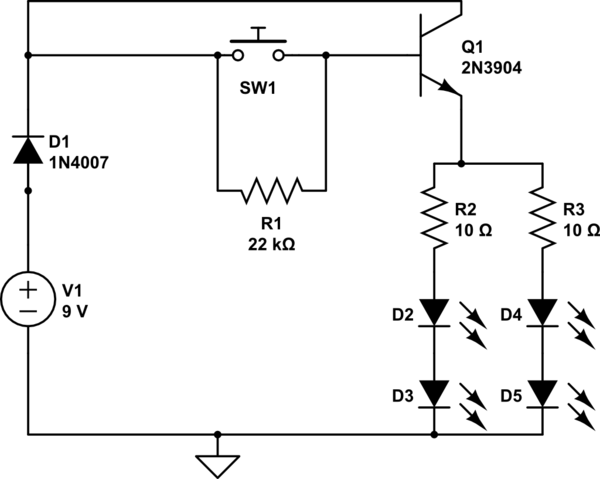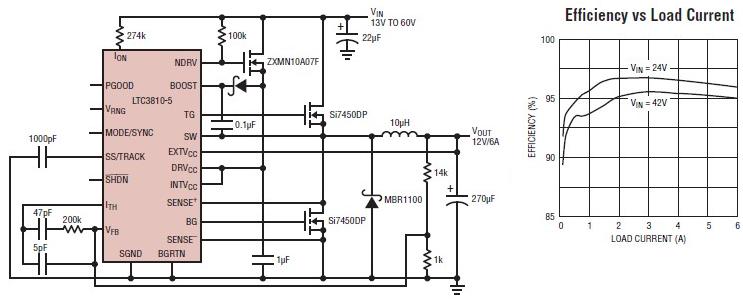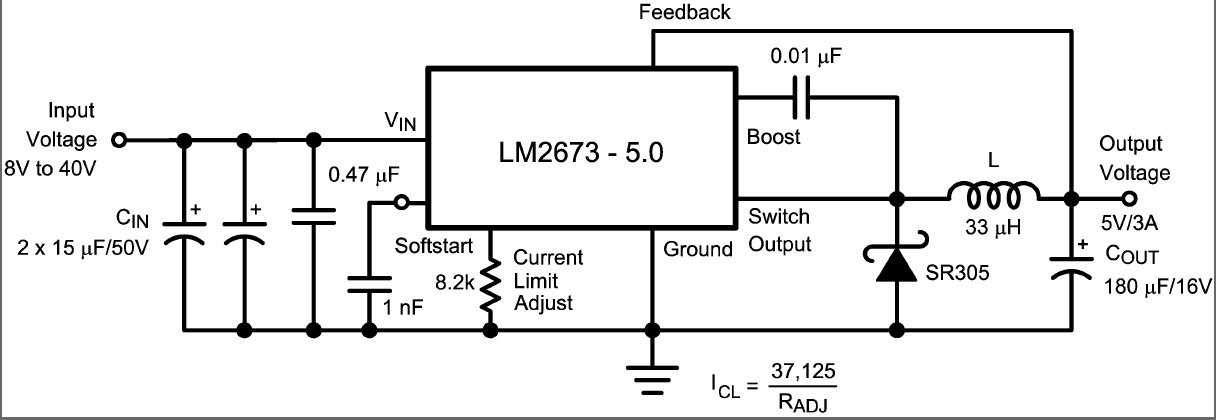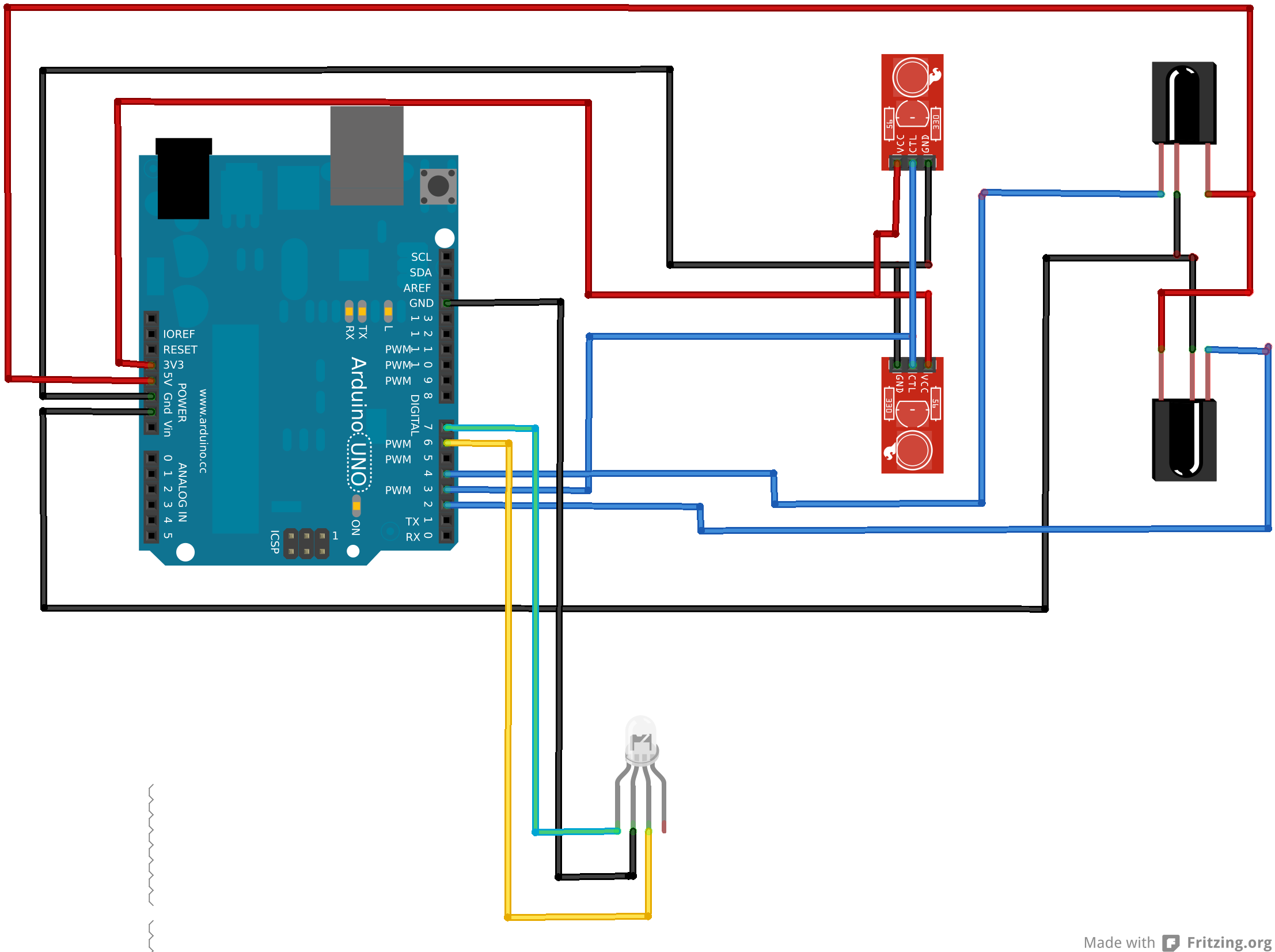
Switching intensity of LEDs

A circuit has been constructed that functions unexpectedly. The circuit utilizes red 5mm LEDs as diodes, a 3904 NPN transistor, and resistors as indicated in the schematic. Logically, pressing the push button normally open (PBNO) should result in the destruction of the red 5mm LEDs due to the current exceeding 300mA according to simulations. However, the circuit operates, with the LEDs initially dim and becoming bright upon pressing the PBNO, which was the intended outcome.
This circuit can be analyzed as follows: The red 5mm LEDs serve as the primary visual indicators, and their forward voltage drop is typically around 2V. The 3904 NPN transistor acts as a switch, allowing current to flow through the LEDs when the PBNO is pressed. The resistors in the circuit are crucial for limiting the current to safe levels, preventing damage to the LEDs despite simulation predictions.
When the PBNO is not pressed, the transistor remains in the cutoff region, and minimal current flows through the LEDs, causing them to emit a dim light. Upon pressing the PBNO, the base of the transistor receives sufficient voltage to enter the saturation region, allowing a larger current to flow from the collector to the emitter. This results in the LEDs brightening significantly.
It is noteworthy that the discrepancy between the simulation and the actual circuit operation may arise from several factors, including the real-world characteristics of the components used, such as the actual forward voltage drop of the LEDs and the transistor's gain (β). Additionally, if the resistors are adequately sized, they can effectively limit the current to a level that the LEDs can tolerate, thus preventing their destruction.
In practice, the circuit's behavior highlights the importance of component tolerances and real-world conditions, which can differ from ideal simulations. Proper testing and validation of the circuit under various conditions are essential to ensure reliable operation.I built this circuit and for some reason it works. FYI, the diodes are red 5mm LED`s, the transistor is 3904 NPN, and the resistors are what are shown in the schematic. Logically it should not work when you press the PBNO. The red 5mm diodes should be destroyed. According to simulating, the current is above 300mA. How is it pos sible this circuit physically works The lights are dim, then when you press the PBNO, they become bright, which is what I was after. 🔗 External reference
This circuit can be analyzed as follows: The red 5mm LEDs serve as the primary visual indicators, and their forward voltage drop is typically around 2V. The 3904 NPN transistor acts as a switch, allowing current to flow through the LEDs when the PBNO is pressed. The resistors in the circuit are crucial for limiting the current to safe levels, preventing damage to the LEDs despite simulation predictions.
When the PBNO is not pressed, the transistor remains in the cutoff region, and minimal current flows through the LEDs, causing them to emit a dim light. Upon pressing the PBNO, the base of the transistor receives sufficient voltage to enter the saturation region, allowing a larger current to flow from the collector to the emitter. This results in the LEDs brightening significantly.
It is noteworthy that the discrepancy between the simulation and the actual circuit operation may arise from several factors, including the real-world characteristics of the components used, such as the actual forward voltage drop of the LEDs and the transistor's gain (β). Additionally, if the resistors are adequately sized, they can effectively limit the current to a level that the LEDs can tolerate, thus preventing their destruction.
In practice, the circuit's behavior highlights the importance of component tolerances and real-world conditions, which can differ from ideal simulations. Proper testing and validation of the circuit under various conditions are essential to ensure reliable operation.I built this circuit and for some reason it works. FYI, the diodes are red 5mm LED`s, the transistor is 3904 NPN, and the resistors are what are shown in the schematic. Logically it should not work when you press the PBNO. The red 5mm diodes should be destroyed. According to simulating, the current is above 300mA. How is it pos sible this circuit physically works The lights are dim, then when you press the PBNO, they become bright, which is what I was after. 🔗 External reference





